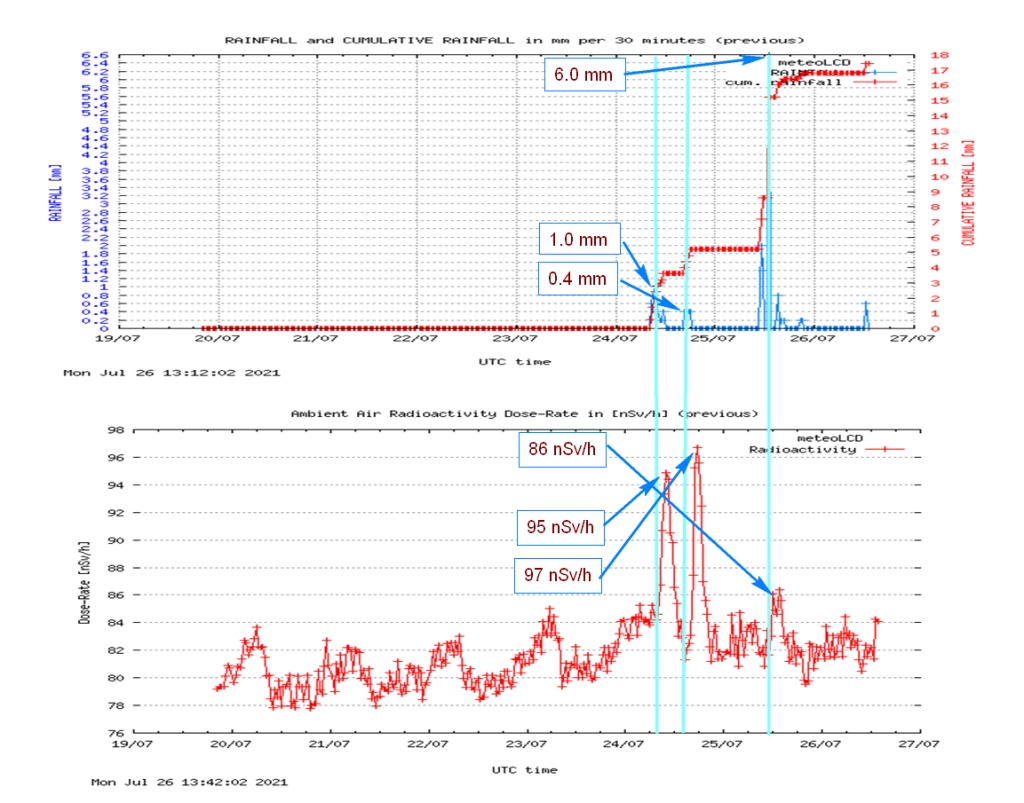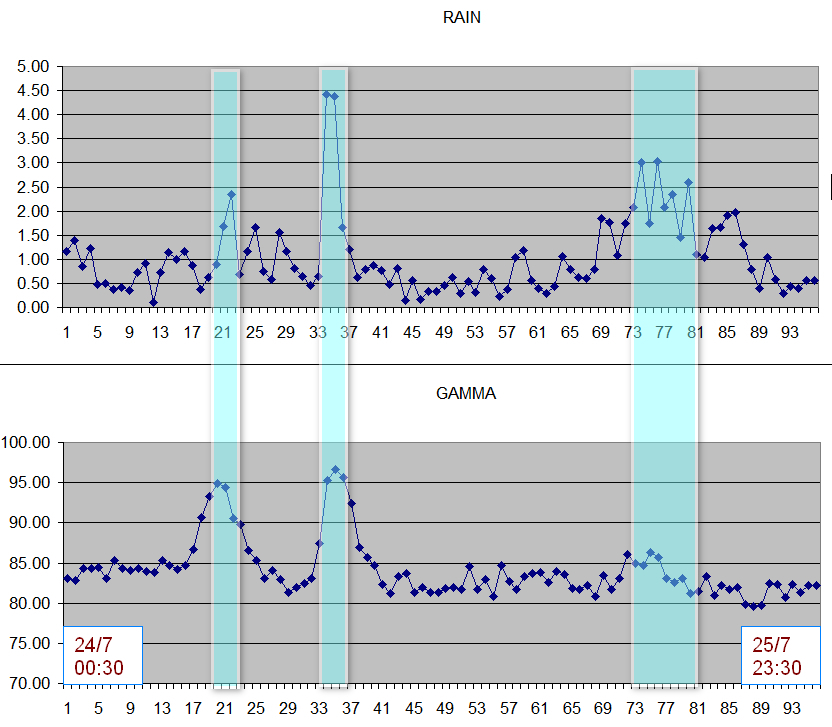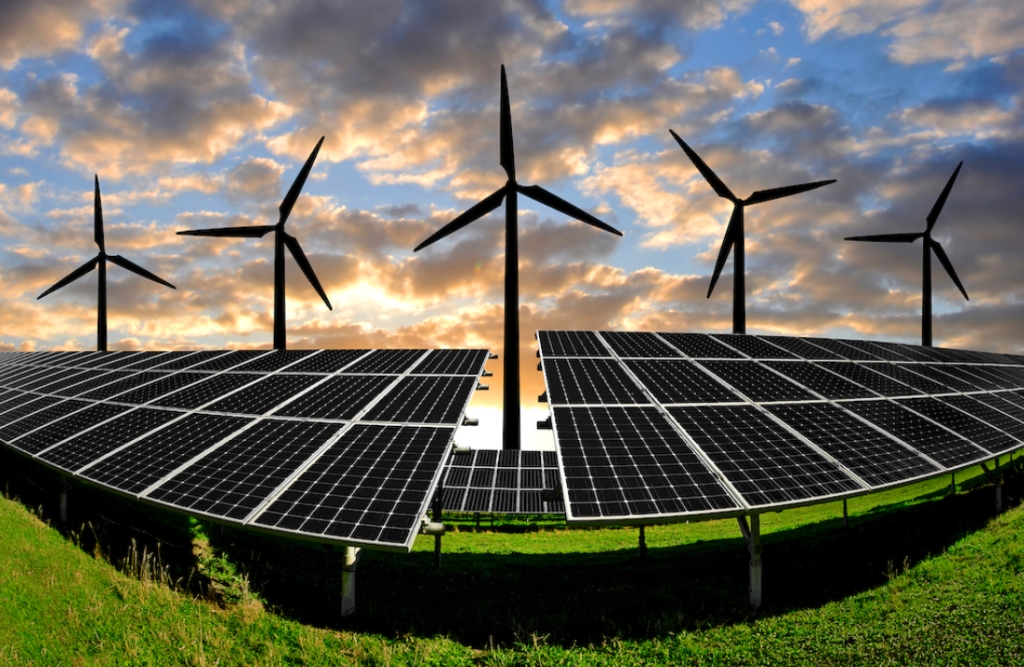In the past I have written many times on the observational fact that due to radon washout, the ambient gamma radiation shows sometimes impressive peaks ( see here, here, here, here, here, ).
In this blog I will show that the graphs of cumulative rainfall and gamma radiation might give a wrong picture, and that using the original time-series yield a more correct insight.
Here what the graphs of cumulative rainfall and gamma radiation of atmospheric air shows for the week covering the 24 and 25 July 2021:

These graphs are not faulty, but give a wrong picture: the two rainfall peaks cause two radiation peaks, with the second higher that the first, even if its “cause” (= the precipitation in mm per half-hour) is much less. This could be a sign of radon washout during the first peak, and radioactivity levels which have not yet recovered to their usual background.The third precipitation peak during the 25th July does only cause a mild surge of the gamma radiation intensity.
Now let’s zoom on the half-hourly levels of precipitation and gamma radiation:

The picture becomes somewhat clearer: there are 2 precipitation peaks during the 24th July 2021, and the intensity of the second is close to the double of the first ( the X scale represent the multiples of half-hours, starting at 00:30). The second radiation peak is practically the same as the first: the gamma levels have not sufficiently recovered from the first washout during the approx. 7 hours to yield a proportional higher peak.
The third event during the 25th July is more “smeared out”: the total rain volume falls down during ca. 3.5 hours (7 half-hours), and is not concentrated on a single half-hour event. This does not cause a strong radiation increase, even after 20 hours have passed since the last rain-fall peak, a time-span probably long enough to compensate for the previous washout. I suggested in one of the previous blogs a recover period of approx. 1 day.
I always marvel why our “greens” have not yet discovered this natural phenomenon of radiation increase, and not jumped on this pattern which should give a good scare. The second peak here is about 97-85 = 12nSv/h, i.e. 14% higher than the usual background. What would Greenpeace say if radioactivity from the Cattenom nuclear facility had increased by this amount?


